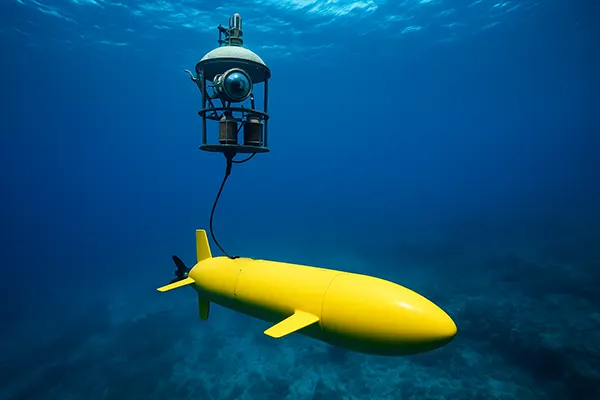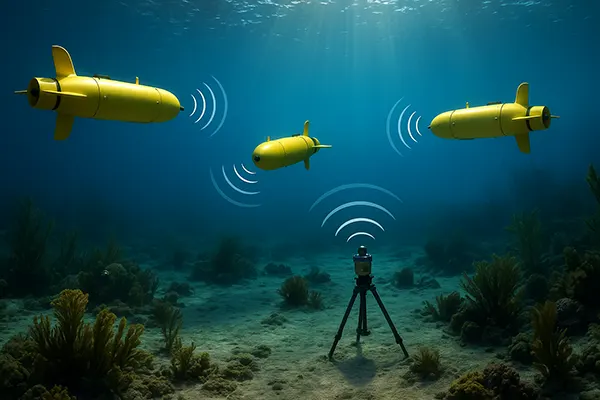
IoT for the Ocean: How Marine Robots Are Shaping the “Internet of Underwater Things”
The ocean remains one of Earth’s final frontiers, yet the need to understand, monitor, and protect it is more pressing than ever. To bridge this knowledge gap, researchers and engineers are now turning to Internet of Things (IoT) technologies tailored for the marine environment. As of February 2025, the deployment of underwater sensors and autonomous robots connected via data-sharing networks is revolutionising ocean research, environmental monitoring, and navigation. This emerging field, often called the “Internet of Underwater Things” (IoUT), integrates cutting-edge robotics with smart communication systems to transform the way we interact with the marine world.
Marine Drones and Sensor Innovations
At the heart of the IoUT are marine drones—autonomous underwater vehicles (AUVs) and remotely operated vehicles (ROVs)—equipped with sophisticated sensors capable of real-time data transmission. Organisations such as MIT’s Sea Grant Program and the EU’s Marine Robotics Innovation Centre are leading efforts to develop interoperable systems that operate at great depths and long durations. These robots can monitor ocean currents, temperature gradients, and biological activity with high precision.
One of the most notable advancements is DARPA’s Persistent Aquatic Living Sensors (PALS), which utilise both bio-integrated and traditional sensors to create a dynamic mesh network in the water. These systems use acoustics rather than radio waves, allowing for communication in the challenging underwater environment. By sharing information, they can detect anomalies such as oil spills or illegal fishing activity.
Recent tests in the Mediterranean Sea have demonstrated successful real-time communication among multiple AUVs, even under low-visibility conditions. These trials pave the way for scaling the network to broader geographical areas and more complex missions, enabling full situational awareness beneath the waves.
Applications in Oceanography and Conservation
Oceanographers now use robotic swarms to create three-dimensional models of marine ecosystems, capturing data that was previously inaccessible. The sensors help track migratory routes of marine species, mapping biodiversity hotspots and feeding zones, essential for conservation planning.
In coral reef monitoring, IoUT devices have been deployed to detect temperature changes that could lead to bleaching events. Their ability to operate continuously and autonomously over months gives scientists time-series datasets critical to long-term environmental research.
Additionally, these technologies support enforcement of marine protected areas. Unmanned vehicles can monitor boundaries and report illegal intrusions, enabling more efficient management of global ocean reserves without constant human oversight.
Data Infrastructure and Transmission Challenges
Despite their promise, marine IoT systems face unique hurdles. Underwater environments impose limitations on data transmission speeds and range due to the properties of water. Most systems rely on acoustic waves, which offer reliability over short distances but are slow and affected by temperature and salinity.
To address this, researchers are working on hybrid communication frameworks that integrate acoustic, optical, and magnetic induction methods. Optical systems offer higher bandwidth but require clear water and line-of-sight. In contrast, magnetic induction works well in murky waters but is limited in range.
MIT’s Ocean Engineering Department and partners in Japan are developing data compression protocols specifically designed for IoUT devices. These protocols reduce the amount of transmitted data without losing scientific value, making real-time monitoring more viable.
Interoperability and Cloud Integration
Creating standardised communication between various underwater devices is a top priority. Currently, many sensor systems operate on proprietary software, which restricts integration. Open-source platforms are emerging to facilitate interoperability, allowing diverse systems to exchange data seamlessly.
Cloud-based ocean data hubs are being established to collect, process, and share information globally. These hubs support data visualisation tools that allow researchers and policymakers to observe marine trends and respond quickly to emerging issues.
The EU’s Digital Ocean project exemplifies this approach, providing a shared infrastructure for marine data across member states. Its framework supports AI-driven analytics for forecasting, marine traffic management, and disaster response planning.

Future Prospects and Global Cooperation
The future of IoUT depends on continued collaboration among nations, academia, and private enterprises. Shared data policies and ethical frameworks will be critical to ensure that this technology benefits all and does not become monopolised by a few nations or corporations.
Plans are underway to integrate marine IoT with satellite systems, enabling near-global coverage. This will allow surface and subsurface data to be correlated in real-time, vastly improving climate models and maritime safety predictions.
Furthermore, educational initiatives are being launched to equip the next generation of engineers and scientists with the skills to maintain and innovate these systems. Institutions in Norway, Singapore, and Canada are already offering degrees focused on underwater robotics and marine data science.
Security and Environmental Ethics
One concern is the potential militarisation of marine IoT technologies. While they offer surveillance capabilities, there is a growing need for clear international regulations to prevent misuse. Discussions are ongoing within the UN’s Decade of Ocean Science framework to address these issues transparently.
There is also a strong focus on eco-conscious design. Many IoUT devices are now being built with biodegradable materials and low-energy consumption circuits to minimise environmental impact. Some even use energy harvesting from ocean currents to power sensors sustainably.
Ultimately, ensuring that the IoUT evolves as a tool for peace, science, and global good is essential. With the right governance and transparency, it can become a foundational element of the digital ocean era.
